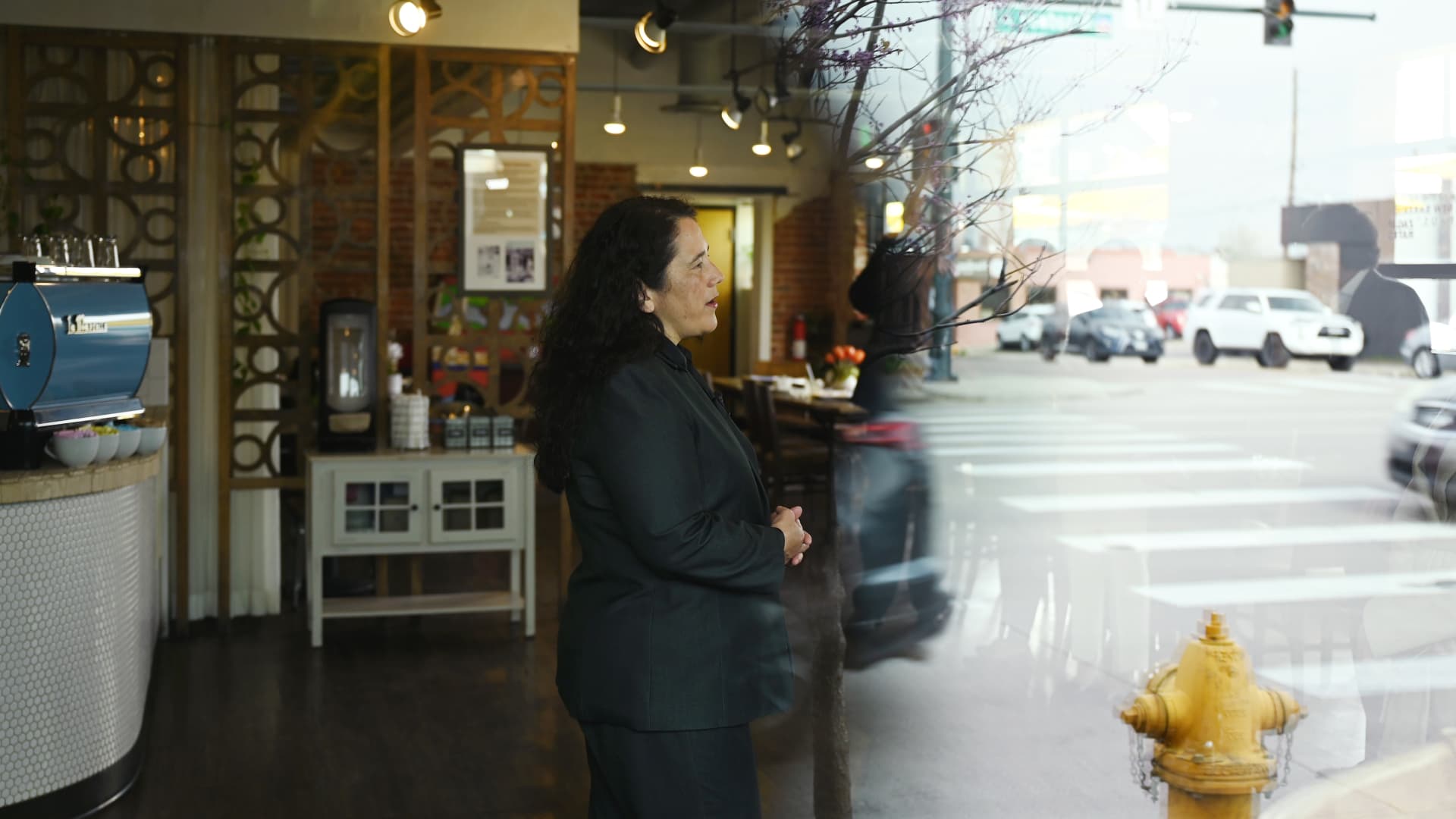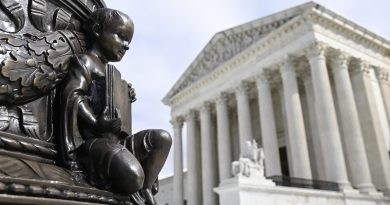The next big post-affirmative action legal ruling to drop targets billions in small business
The Small Business Administration’s federal contracting program for socially and economically disadvantaged small businesses wasn’t a direct target of the U.S. Supreme Court decision earlier this year to effectively end race-conscious admission programs at colleges and universities. But it helped buoy the legal attacks against the SBA program, and more changes could be on the way due to ongoing litigation.
The SBA had to briefly pause new applications, and then tweak the application process for its 8(a) Business Development Program in the wake of a court ruling by Judge Clifton L. Corker of the U.S. District Court for the Eastern District of Tennessee. He ruled that the SBA had violated the U.S. Constitution through policies that presumed minority business owners were socially disadvantaged based solely on their race.
Judge Corker’s ruling underscores the far reach of the U.S. Supreme Court decision which continues to have a ripple effect on corporate America and the business world.
In September, to comply with Judge Corker’s ruling, the SBA changed certain parts of the application process for a subset of small businesses to qualify for federal contract work. However, the plaintiff in the case — a white woman who owns Ultima Services Corporation and who doesn’t qualify for the 8(a) program — has additional pending challenges and litigation is ongoing.
Here’s what small business owners competing for federal contracts need to know in the meantime:
Basic qualification factors for the 8(a) program
The 8(a) program is designed to help socially and economically disadvantaged small business owners expand their footprint in the federal marketplace through training and contract support. Before Judge Corker’s ruling, individual Black Americans, Hispanic Americans, Native Americans, Asian Pacific Americans, and Subcontinent Asian Americans applying for the program could establish that they were socially disadvantaged by demonstrating that they held themselves out as a member of one of those designated groups. To qualify, owners must also meet certain other ownership and economic qualifications outlined by the SBA.
The federal government awarded $69.9 billion, or 11.38%, of federal prime contracting dollars to small disadvantaged businesses in fiscal year 2022. The 8(a) program represents a portion of these awards, with $21.7 billion being awarded through set-aside contracts for participants in the 8(a) program.
New social disadvantage explanation requirements
The SBA initially suspended new applications for the 8(a) program in response to the court ruling. It reopened the application portal in late September, with guidance for small businesses on how to apply and update their application, if necessary.
At issue was the SBA’s long-standing approach that presumed an owner was socially disadvantaged if he or she belonged to certain racial groups. Relying in part on Supreme Court precedent, the judge found the SBA hadn’t narrowly tailored its approach and thus violated Ultima’s Fifth Amendment right to equal protection of the law. To comply with the ruling, the SBA now requires owners to describe in some detail their social disadvantage, instead of relying on the race-based presumption. The hope is that this narrowly tailored approach will pass legal muster.
The application now includes a plain language, fillable questionnaire that offers owners the opportunity to describe their social disadvantage. There are a handful or so of questions to guide owners, prompting them to describe what happened and how it affected their ability to start or expand their business, among other things.
Alternatively, businesses can prepare what’s known as a “social disadvantage narrative” and upload it directly to the application platform. The SBA says in its guide to preparing a social narrative that an individual should typically provide two incidents of bias to establish chronic and substantial social disadvantage. One incident may be enough “if it is pervasive or recurring,” the guide says. The SBA also recommends owners provide no more than two examples “to avoid unnecessary delays during the review process.”
Generally, three pages should be sufficient for the narrative, but it could be more or less, according to the SBA guide.
SBA encourages use of simplified questionnaire
The questionnaire pathway might be simpler for people and the SBA encourages people to use it. But if a new applicant already prepared a narrative, they don’t have to convert it to the questionnaire format — the applicant can upload the narrative document and skip those questions, according to an SBA spokesperson.
To receive new 8(a) contracts, small businesses that previously relied on the presumption of social disadvantage to support eligibility will need to submit to re-establish eligibility through the new process.
Owners who submitted a narrative as part of their original application will not need to submit a new narrative, according to the SBA.
The extra time for the application will depend on the individual, but the guided questionnaire format can help people without the need to write their own narrative, attorneys said.
Net-worth, income and asset tests
Aside from the social disadvantage aspect, businesses applying for the first time to the program have to show their economic disadvantage through personal net worth, adjusted gross income and assets, said Jayna Marie Rust, a partner with Thompson Coburn who regularly works with 8(a) program participants. This remains a condition to be approved for the program. There are also annual review requirements for ongoing eligibility purposes.
“If you thought it was going to be valuable before, and you were willing to go through the application process, the same value is there, and the application process is not that much different,” Rust said.
New application approval timelines
Generally, the process to be approved to the 8(a) program can take 60 to 90 days. The process may take slightly longer than usual with the new application requirements, the SBA spokesperson said.
For applicants who are in the program but need to submit new evidence of social disadvantage, the process can be quicker. Dominique Casimir, a partner with Blank Rome, who focuses on government contracts litigation and counseling, had a client approved after three weeks, for instance.
Small businesses should be aware that the SBA may ask for further detail based on the answers they provide, said Zachary Schroeder, an attorney in the government contracts group at Crowell & Moring. It may not be “a one-and-done situation,” he said.
The SBA said the new process retains the same rigor as the previous one.
Where the court proceedings stand
The plaintiff, Ultima Services Corporation, has asked the court to go further than its injunction to temporarily stop the SBA “from awarding, completing, modifying, or exercising options on any contracts through the 8(a) program to 8(a) participants who received the benefit of the rebuttable presumption —regardless of whether the SBA subsequently approved a narrative of social disadvantage.”
The SBA has countered that a ruling for the plaintiff would “significantly limit the functions and efficacy of the 8(a) program” and would bring much of it to “a sudden halt.”
The judge has not yet ruled on the matter, but legal experts expect a ruling could come soon.
Making the decision to apply or wait out the litigation
Even though litigation is ongoing, the application portal is open for small businesses, and industry participants encourage owners to take the necessary next steps for participation in the program.
“As we await a final ruling, the SBA and Biden-Harris Administration remains committed to supporting the 8(a) Program and standing up for the small business owners who have helped drive America’s historic economic growth,” SBA Administrator Isabel Guzman said in a statement discussing the reopening of the application portal.
Despite uncertainty, Casimir encourages small businesses to apply, or update their application, if required, to comply with the new procedures. “If they don’t pursue the certification…they may be shut out of opportunities.”
This article was originally published by a Cnbc.com. Read the Original article here. .






